

Giraffe
in
Etosha National Park, Namibia
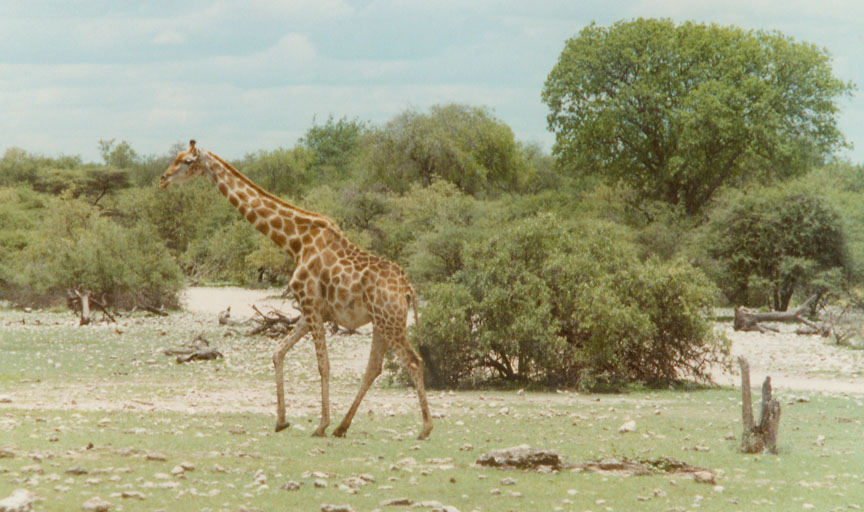
Tallest of all mammals, the giraffe attains an overall height of 5.5 m (18 feet) or more. An unmistakable animal, it has a comparatively short body and very long legs and neck. The back slopes downward to the hindquarters, and the neck, despite its length, contains only the seven vertebrae typical of most mammals. The tail is tufted, and there is a short mane on the neck. Two to four short, skin-covered horns are present in both sexes and there is a central swelling, between the eyes, which in northern giraffes is almost as long as the horns. The coat is pale buff, covered to a greater or lesser extent with reddish brown spots that range from regular and geometric in some forms to irregular and blotchy, or leaf-shaped, in others.
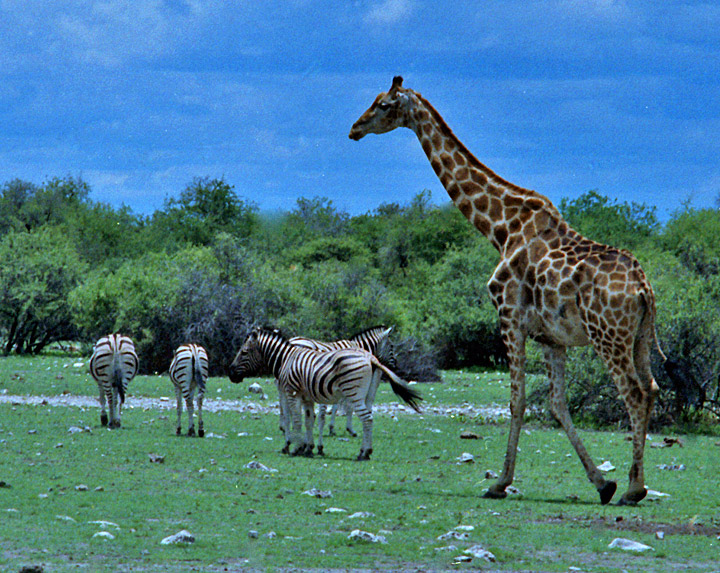
sharing space with the Zebra
The giraffe lives in herds on savannas and in open bush country and is native to
most of Africa south of the Sahara. It feeds primarily on acacia leaves. To
reach the ground or to drink, it must bend or spread its forelegs. The gait of
the giraffe is a pace (both legs on one side move together), and, because of its
long stride, is swifter than it appears; about 48 km (30 miles) per hour may be
reached at a full gallop. One young is usually produced at a birth; gestation is
about 14 to 15 months. The calf can follow its mother within one or two hours of
its birth.
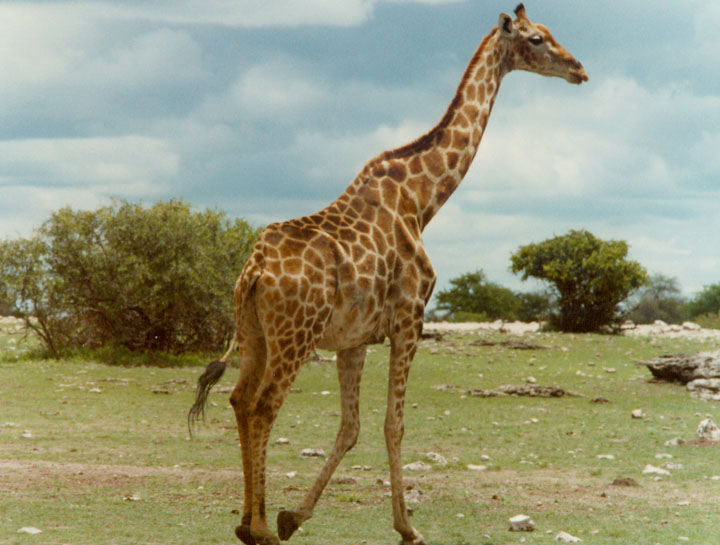
The giraffe possesses keen sight, smell, and hearing. Its principal predator,
other than man, is the lion. When defending itself, the giraffe kicks with its
heavy hooves. Males fight among themselves by swinging their heads at one
another. The voice of the giraffe has so rarely been heard that the animal is
popularly supposed to be voiceless, but it is capable of producing low call
notes and moans. Still numerous in East Africa, where it is protected, the
giraffe elsewhere has dwindled in number or has been exterminated because of
hunting by man.
Text from Encyclopedia Britannica


giraffe tracks

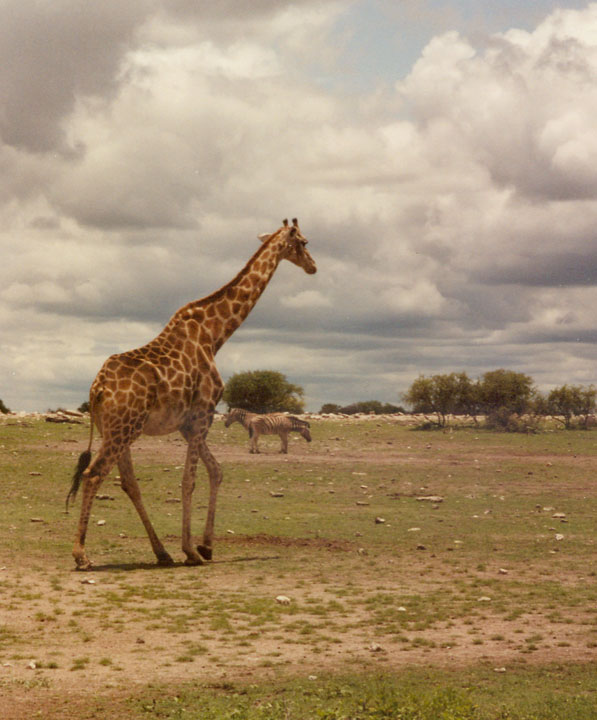
note to two headed Zebra in background

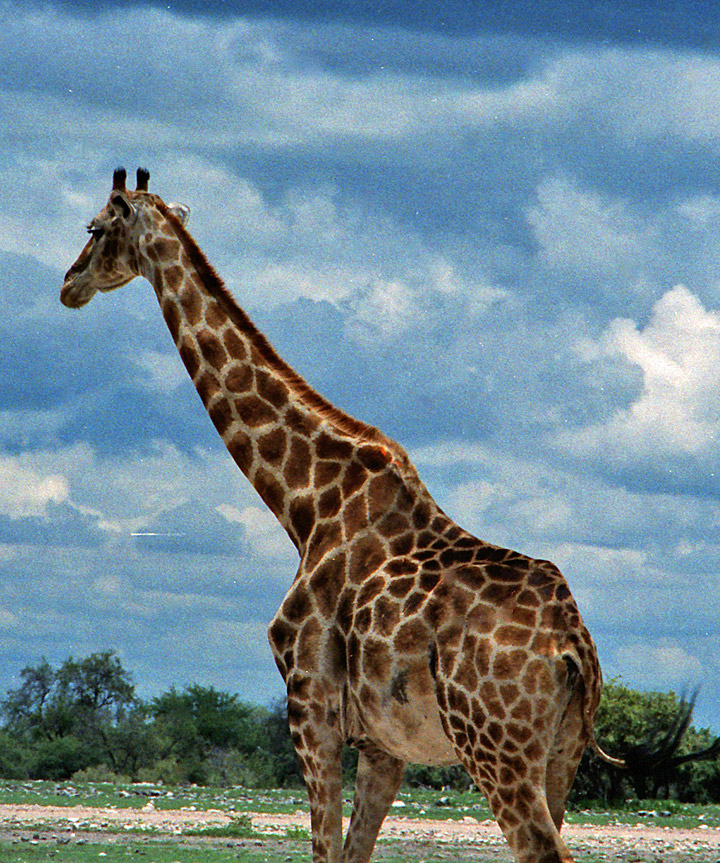
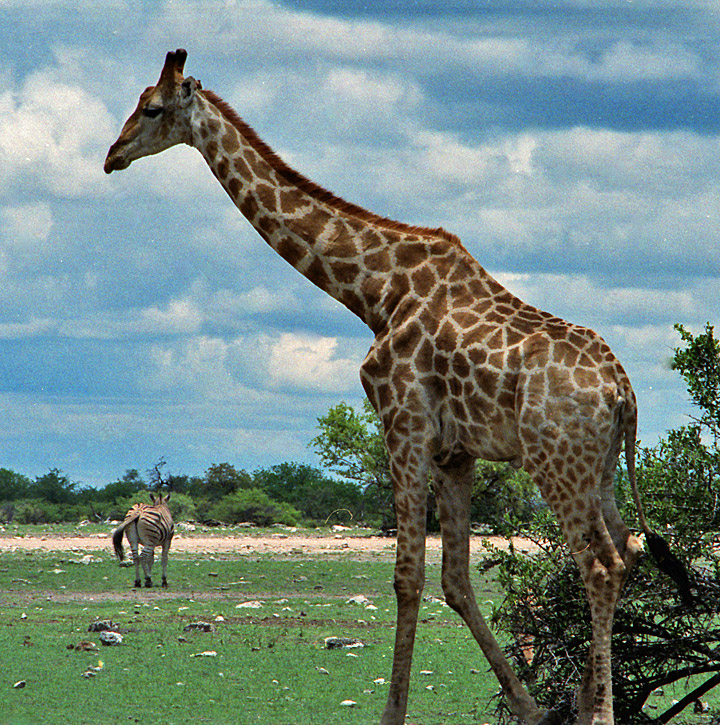
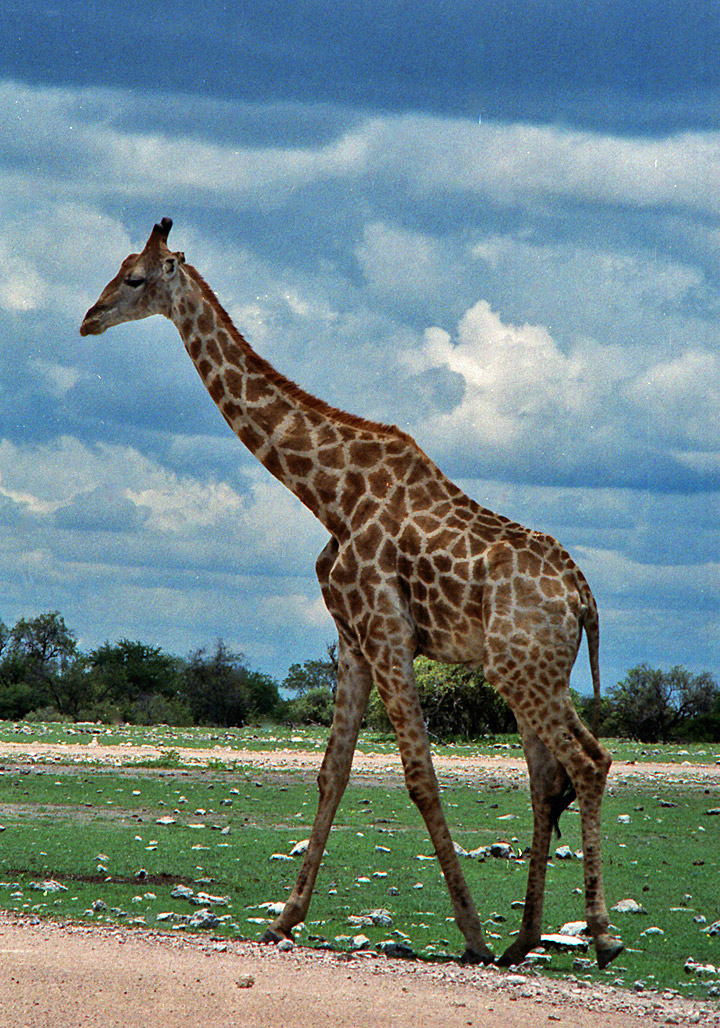
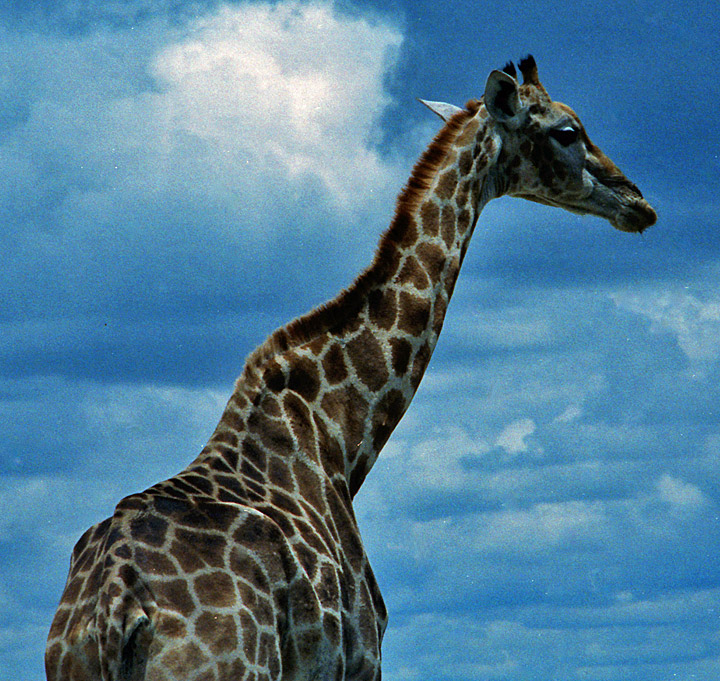
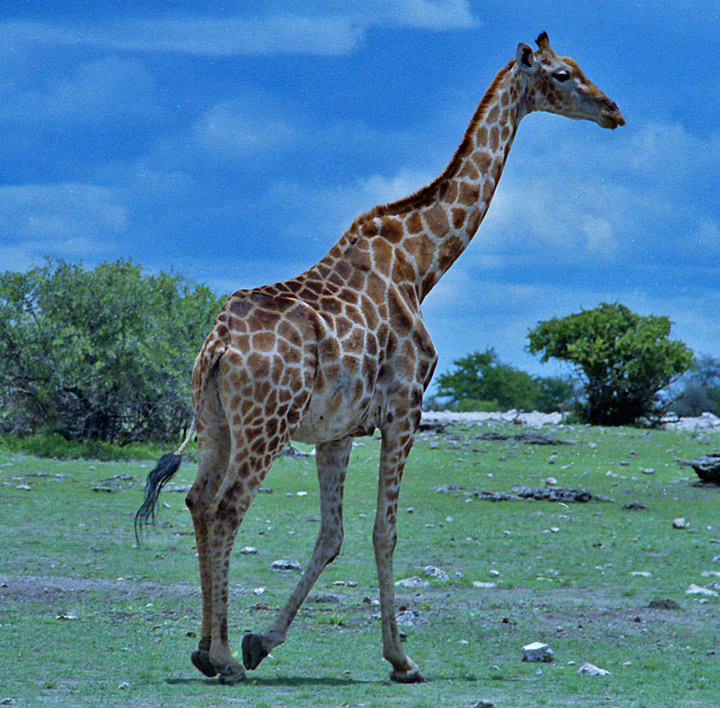
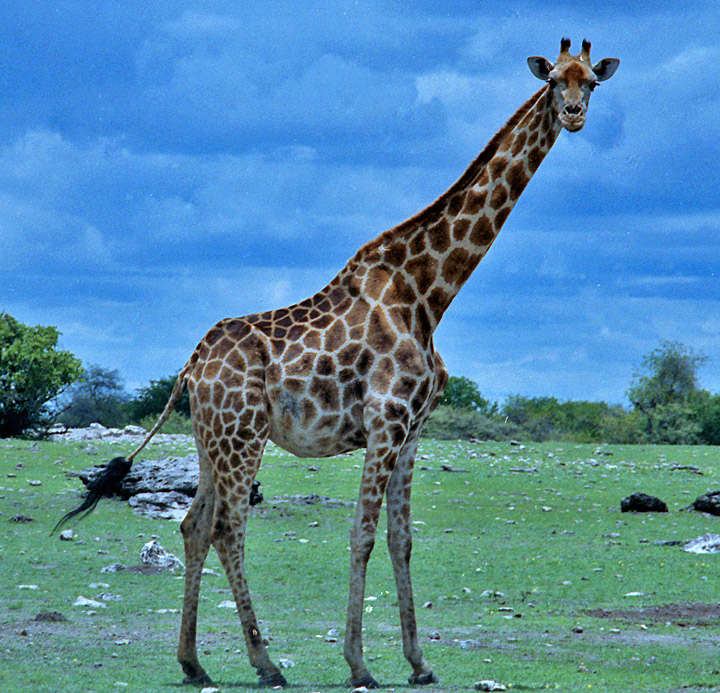
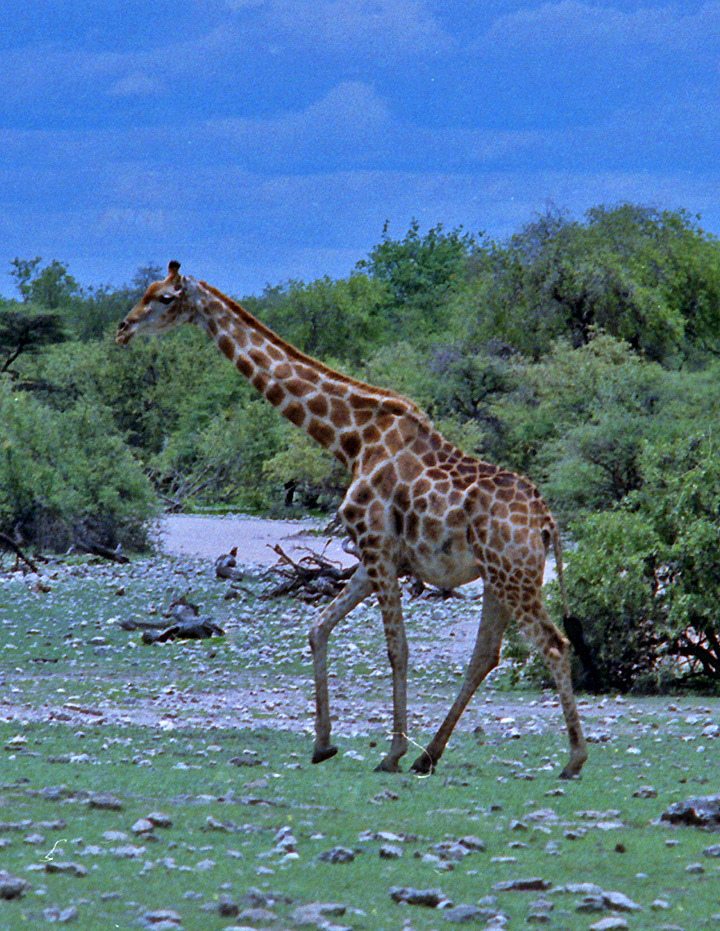
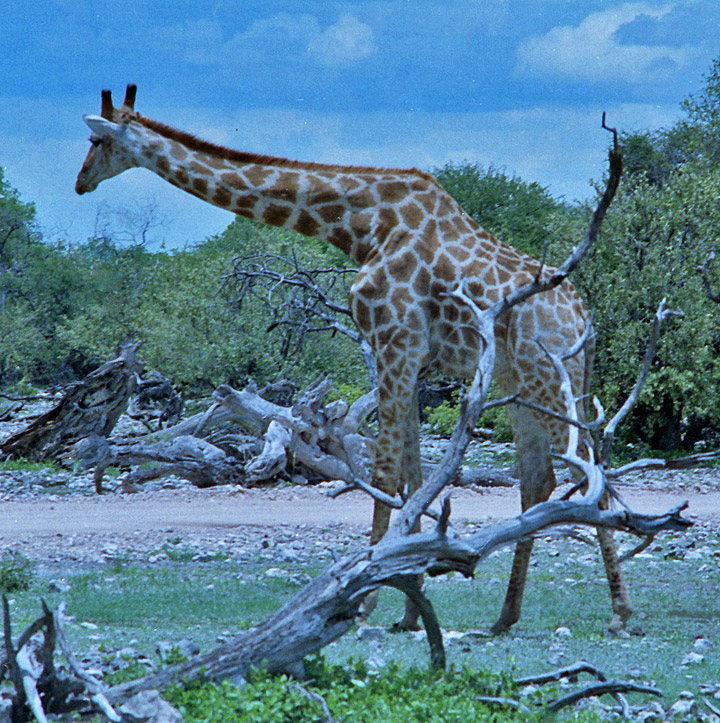
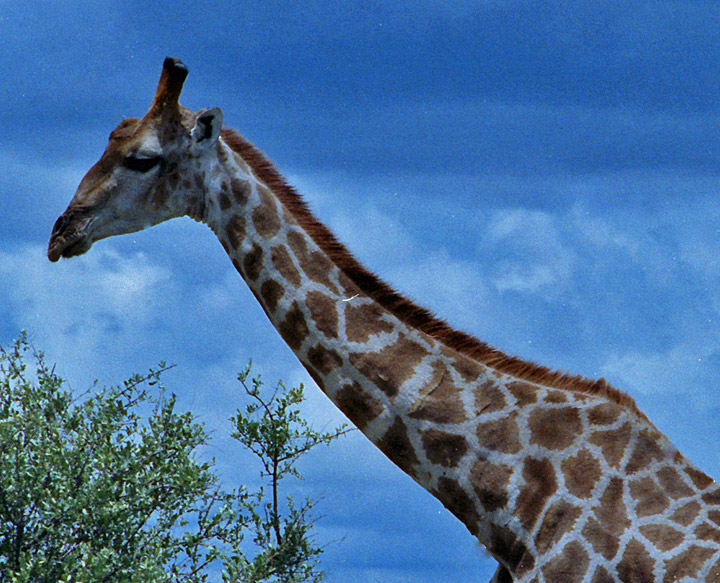

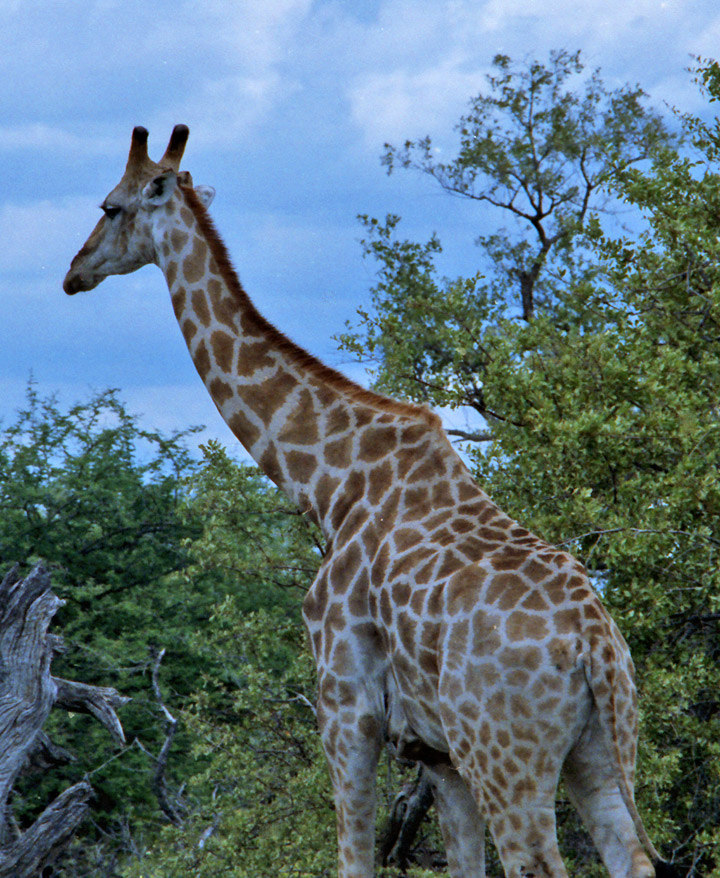
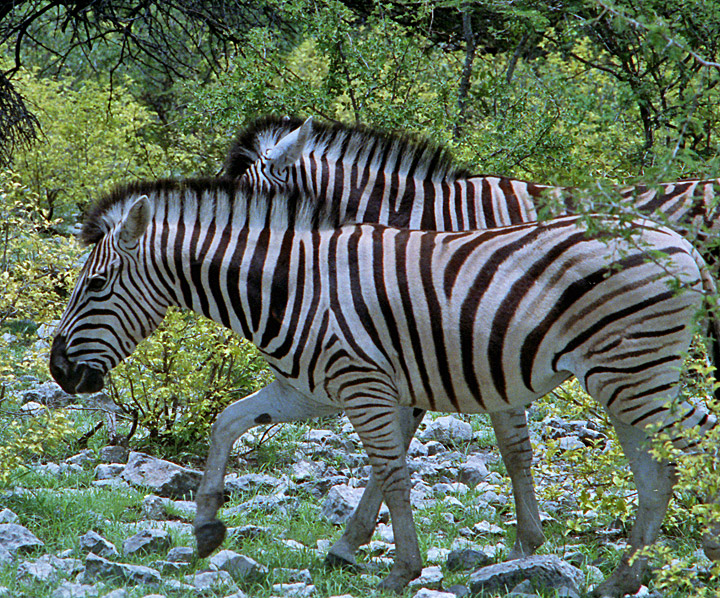
![]()
![]()